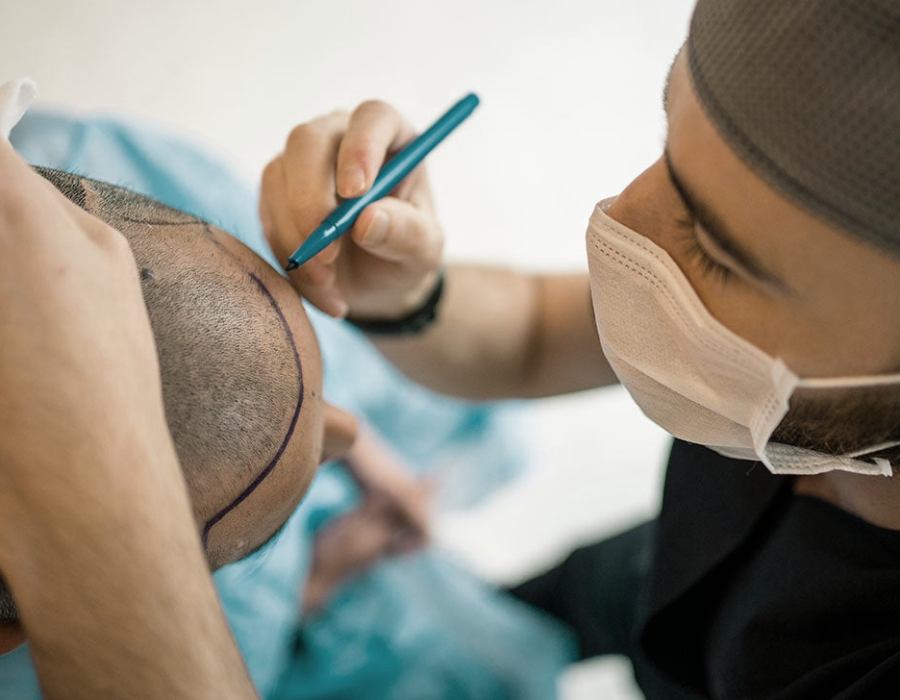FUE (follicular unit extraction) hair transplant is a popular and effective method for hair restoration, known for its minimal scarring and natural-looking results. One of the most common questions among prospective patients is, "How many grafts can be transplanted in a single FUE hair transplant session?" The answer varies based on several factors, which we'll explore in this blog.
Understanding Grafts and Follicular Units
Before diving into numbers, it's essential to understand what a graft is. In the context of hair transplants, a graft refers to a small piece of tissue containing hair follicles, which are the structures in the skin that produce hair. Each graft can contain one to four hair follicles, and you might want to check the fue hair transplant cost in Bangalore.
Factors Influencing the Number of Grafts
Donor Area Availability: The donor area is the part of the scalp from which hair follicles are harvested. The density and health of the hair in this area significantly influence how many grafts can be extracted and transplanted in a session.
Recipient Area Size: The size of the area that needs to be covered also plays a crucial role. Larger areas require more grafts to achieve a natural and dense look.
Patient's Goals: Each patient's desired density and coverage will affect the number of grafts needed. Some may prefer a less dense, natural look, while others may want more coverage and density.
Surgeon's Expertise: The skill and experience of the surgeon performing the procedure can impact how many grafts can be transplanted efficiently and safely in a single session.
Health of the Scalp: The overall health and elasticity of the scalp can affect the transplant process. A healthier scalp can typically accommodate more grafts.
Typical Number of Grafts Per Session
Small Sessions
For minor areas or touch-ups, around 500 to 1,000 grafts might be transplanted in a single session. These small sessions are typically ideal for patients who have experienced only a slight amount of hair loss or for those looking to enhance the density of hair in a localized area. The procedure for small sessions is generally shorter in duration, making it less taxing on the patient. Recovery time is also usually quicker compared to larger sessions. Additionally, small sessions might be suitable for patients who prefer a more gradual approach to hair restoration. This method allows them to assess the results incrementally before committing to a more extensive procedure. Despite the smaller number of grafts, the precision and care required in these sessions are just as crucial as in larger procedures. With little downtime, patients can anticipate outcomes that seem natural.
Medium Sessions
For moderate hair loss, 1,500 to 2,500 grafts are common. Medium sessions are often chosen by patients who have noticeable thinning or bald patches that need significant coverage. These sessions strike a balance between achieving substantial hair density and maintaining a manageable procedure time. Patients undergoing medium sessions can expect the procedure to last several hours, depending on the complexity and the number of grafts being transplanted. The recovery period might be slightly longer than that of small sessions, but it is generally well-tolerated. Medium sessions provide a good option for those who want to see a more dramatic improvement without undergoing multiple smaller procedures. The results from medium sessions can offer a significant boost in hair density, contributing to a more youthful and fuller appearance. It's important for patients to follow post-procedure care instructions to ensure optimal results.
Large Sessions
For extensive hair loss, it's possible to transplant 3,000 to 4,000 grafts in a single session, depending on various factors such as the patient's donor area density and the skill of the surgical team. Large sessions are designed for individuals who wish to address substantial hair loss in one go. These sessions are more intensive and require meticulous planning and execution. The procedure can take a full day, and patients need to be prepared for a longer recovery time compared to smaller sessions. However, the payoff for fue hair transplant cost in Bangalore is significant, as large sessions can drastically transform the appearance of the hairline and scalp. Patients opting for large sessions should ensure they choose an experienced surgeon, as the complexity of transplanting a high number of grafts requires exceptional skill. The results from large sessions are typically very satisfying, offering dense and natural-looking hair coverage that can make a profound difference in appearance and confidence.
Mega Sessions
In some cases, "mega sessions" can involve transplanting up to 5,000 grafts or more. These sessions are typically longer and require a highly experienced surgical team to ensure the best outcomes. Mega sessions are often used for patients with significant hair loss who want to achieve maximum coverage in a single procedure. These sessions can span several hours or even be split over two consecutive days. The recovery period for mega sessions is more extended, and patients need to adhere strictly to post-operative care guidelines to facilitate healing and graft survival. The advantage of mega sessions is the ability to achieve extensive coverage and density in one go, which can be both cost-effective and time-saving in the long run.
Conclusion
The number of grafts that can be transplanted in a single FUE hair transplant session varies widely based on individual circumstances. On average, patients can expect between 1,000 and 4,000 grafts per session, with some going as high as 5,000 or more in mega sessions. Consulting with a skilled hair transplant surgeon is crucial to determining the best approach for your specific needs and achieving the desired results.
If you're considering a FUE hair transplant, it's essential to have a thorough consultation with your surgeon to understand the possibilities and limitations based on your unique situation.





Comments